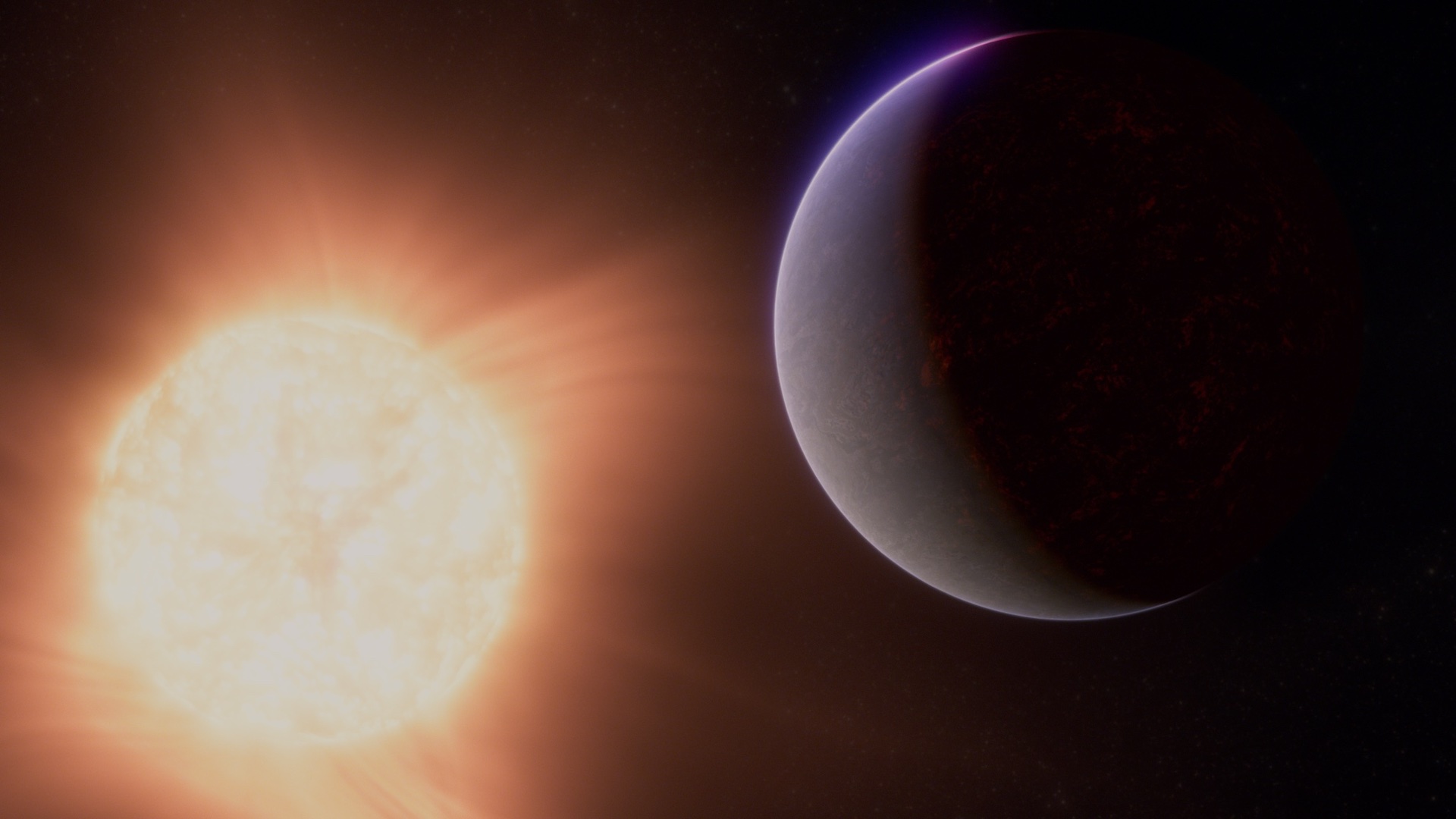
Can a "Hell Planet" have an atmosphere? In a new paper published May 8 in the journal Nature, researchers using the James Webb Space Telescope (JWST) may have finally cracked this decades-old exoplanetary mystery — and, in doing so, detected the best evidence of an atmosphere around a rocky world outside our solar system.
55 Cancri e is a fiery world. Classified as a rocky "super-Earth", this exoplanet is twice the diameter of Earth, and orbits its star at a mere 4% of the distance between Mercury and the sun. Its surface is probably covered in a sea of molten magma, with ambient temperatures hot enough to melt iron.
Ever since 55 Cancri e was discovered in 2004, scientists have been puzzling over various aspects of its existence: its orbital period, its density, and most of all, its atmosphere. Initially, researchers weren't sure whether the exoplanet could even support an atmosphere; some believed it was simply too hot and too close to its star. But new evidence from JWST suggests that 55 Cancri e is indeed blanketed with a layer of gas — albeit an unusual one.
The first hint that this super-hot super-Earth had an atmosphere came from a weird temperature measurement. Using JWST's mid-infrared instrument (MIRI), researchers measured the thermal emissions from 55 Cancri e's day side. If the planet had no atmosphere, its daytime temperature would spike to around 4,000 degrees Fahrenheit (2,200 degrees Celsius). But that's not what MIRI found.
"Instead, the MIRI data showed a relatively low temperature of about 2,800 degrees Fahrenheit [1500 C]," lead study author Renyu Hu, an astronomer at NASA's Jet Propulsion Laboratory, said in a statement. This reading indicates that something — likely an atmospheric current — was moving heat from the day side to the night side of the planet.
Related: Distant 'hell planet' with diamond core is the victim of a gravitational catastrophe
Next, Hu's team used the near-infrared camera (NIRCam) instrument to determine what elements might be present in this suspected atmosphere. They found evidence of carbon dioxide or carbon monoxide gas swirling around the planet's molten rock surface.
But the researchers suspect that this gaseous layer has not been present since the planet's formation — such an atmosphere would be quickly and violently stripped by solar winds from its nearby star. Rather, they think that the carbon-rich "secondary atmosphere" is bubbling out from the planet's interior. This would allow the atmosphere to continually replenish itself, even as the gasses boil away.
Study co-author Diana Dragomir, an exoplanetary researcher at the University of New Mexico who has been studying 55 Cancri e for more than 10 years, was particularly excited by the results. "It's been really frustrating that none of the observations we've been getting have robustly solved these mysteries," she said in the statement. "I am thrilled that we're finally getting some answers!"







